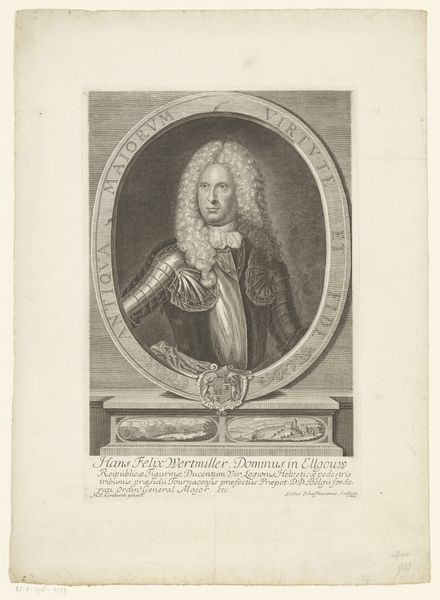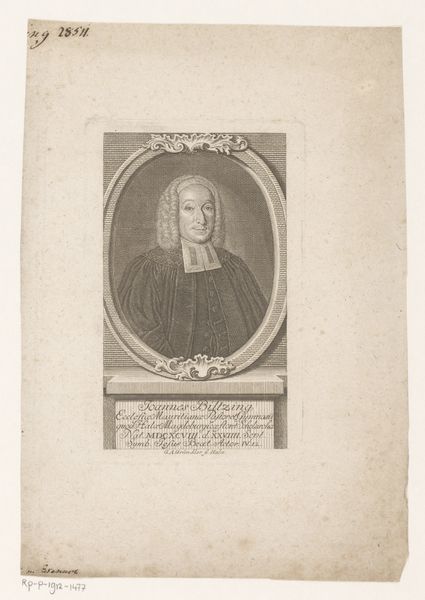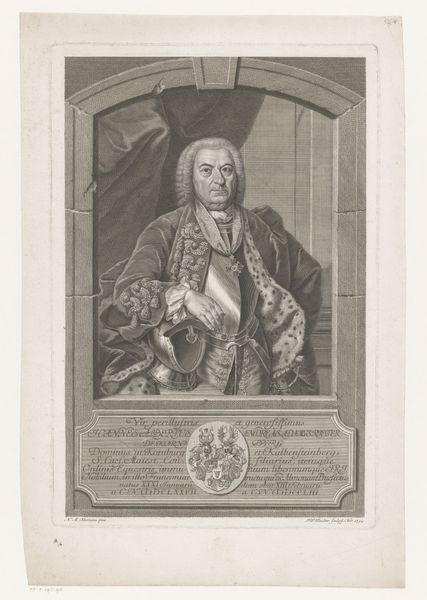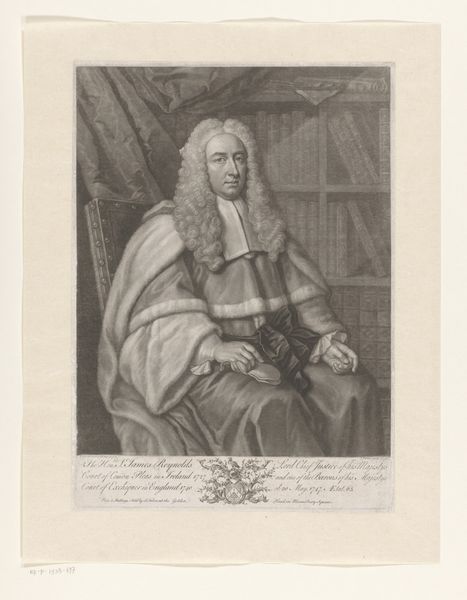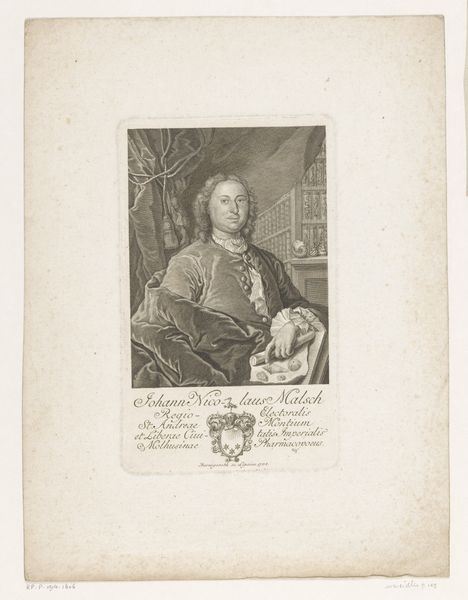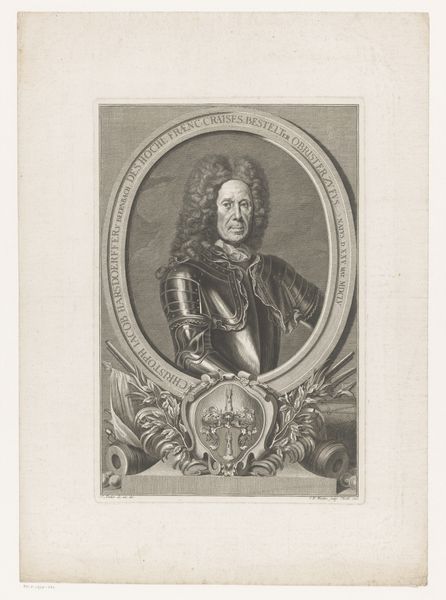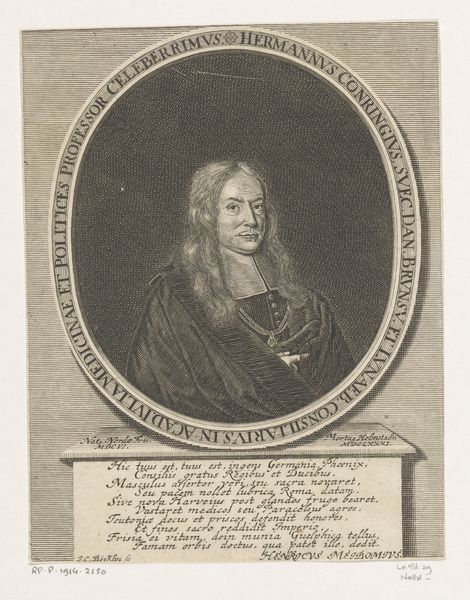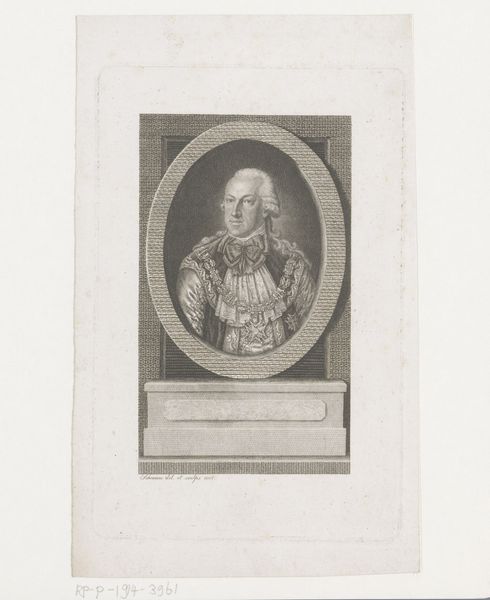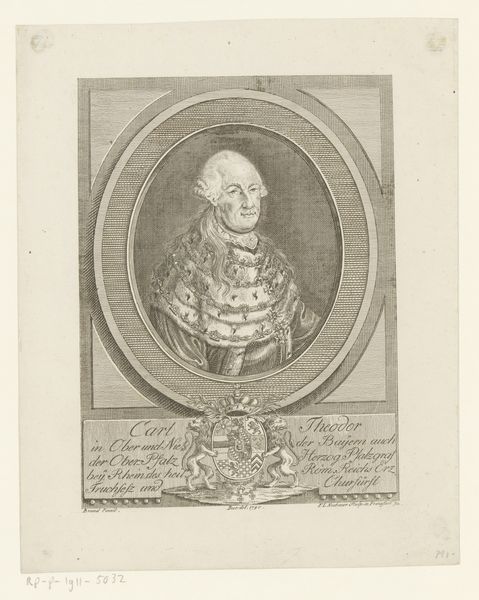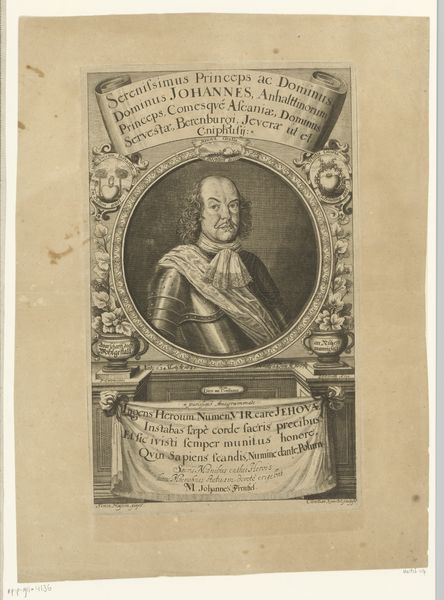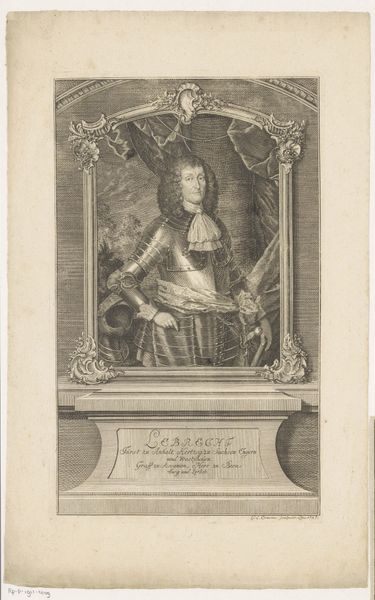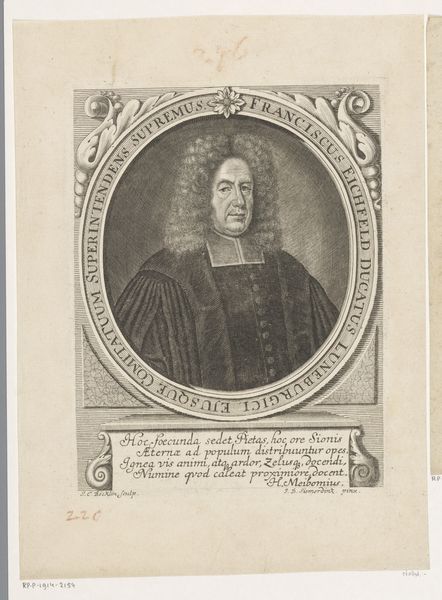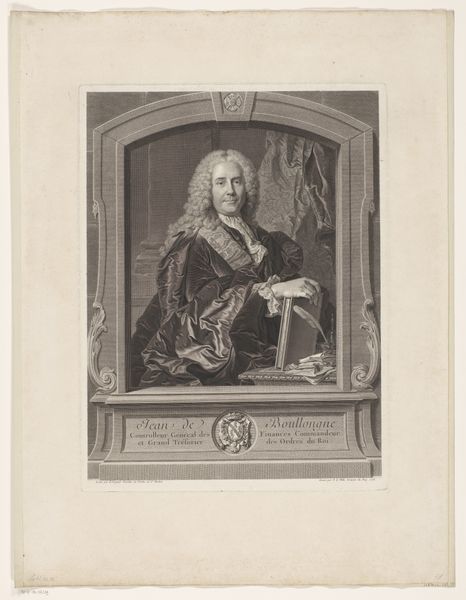
print, engraving
#
portrait
#
baroque
# print
#
history-painting
#
engraving
#
realism
Dimensions: height 222 mm, width 175 mm
Copyright: Rijks Museum: Open Domain
Curator: I find this 1760 engraving, "Portret van koning Johan van Denemarken," quite compelling in its linear precision. The details, meticulously etched by Georg Wilhelm Bauernfeind, capture a regal stillness. Editor: It's somber, isn’t it? The shading and tight composition gives me a sense of constraint. I imagine that heavy robe and ornamentation would weigh anyone down. Curator: Consider the role of portraiture during the Baroque era—it's a visual language used to convey power. The engraving itself speaks to the increasing accessibility of art production through printmaking techniques, engaging wider audiences beyond the court. The choice of rendering Johan in print allows the king's image to circulate, establishing the monarchy’s authority to be omnipresent through reproduced media. Editor: Agreed, the fur trim around his neck visually conveys wealth and importance. His gaze is steady but softened, perhaps communicating wisdom alongside power, though he doesn't look overjoyed to be immortalized this way. Curator: Look closely at the arch around the portrait. It's almost as if he's staged like a sculpture on display. This elevation emphasizes both Johan's importance and simultaneously commodifies him, making him part of the artifice in production. Editor: So, while this seems like a straightforward historical document, we should read this portrait through its production process, acknowledging the networks and cultural assumptions inherent in Bauernfeind’s craft? Curator: Precisely! We must understand that what appears to be merely a historical image of royalty is really an artistic product born from specific historical circumstances and its own materiality. The engraving signifies a calculated use of reproducible imagery for dissemination within a specific social context. Editor: I hadn't thought about it like that initially, but analyzing Bauernfeind’s means of producing the engraving adds so much. It emphasizes how potent prints like these can be in reinforcing notions of royalty. Curator: Seeing it this way helps understand how images work, historically and culturally. It goes beyond surface-level appeal into considering what goes on “behind the scenes” of its production. Editor: Right! Thank you for pointing that out; it makes you appreciate all the labor it embodies while prompting contemplation regarding this portrayal and production.
Comments
No comments
Be the first to comment and join the conversation on the ultimate creative platform.
